
Hello everyone. Last month we visited the town of Calamocha, located in the province of Teruel. In mid-January, the temperature here was below freezing.

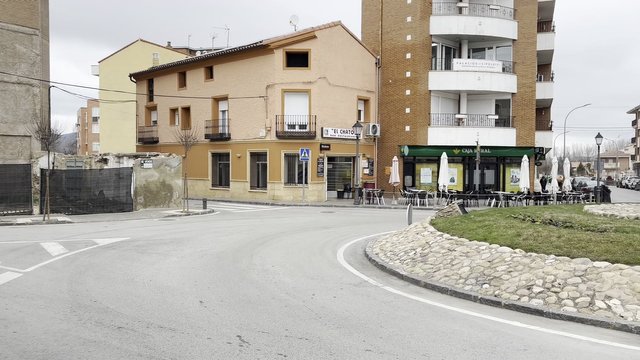
First of all Calamocha is famous for its jamón (Spanish ham). There is a jamón museum here, along with jamón production facilities and delicious sandwiches made with high-quality pork. In general the food is quite tasty.

We bought a sandwich from a café. It contained pork loin and jamón, along with some mayonnaise. There is a great variety of sandwiches here. The one you see costs around €6, while others are priced at about 5 euros and up. This is not an advertisement—just my personal experience. We often stop by here to eat when passing through.



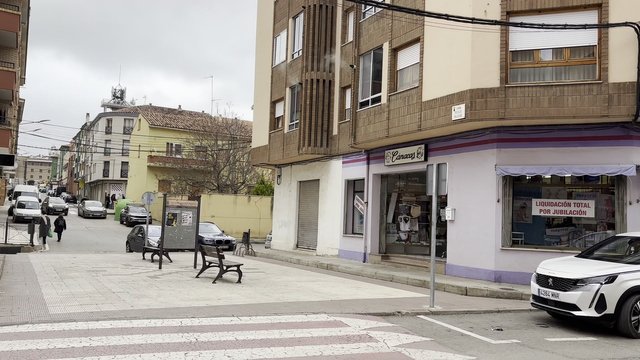
Calamocha is located between Teruel and Zaragoza, about 70 km from both cities, making it an important transportation hub. It is also on one of the main routes between Valencia and Bilbao.




This town belongs to the Aragon region. Summers are quite hot, while winters have a more continental climate. Right now, many parts of Spain are experiencing cold weather. When we arrived, it was -1°C and at night, the temperature dropped to -6°C.

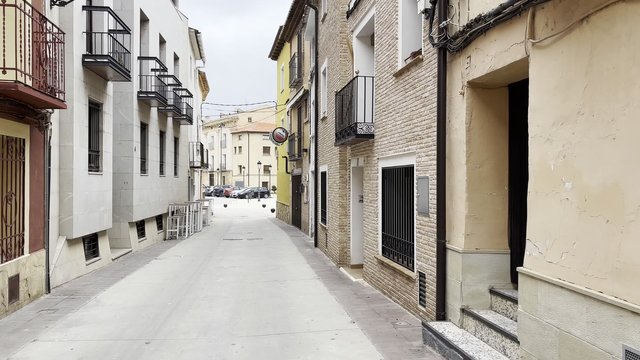
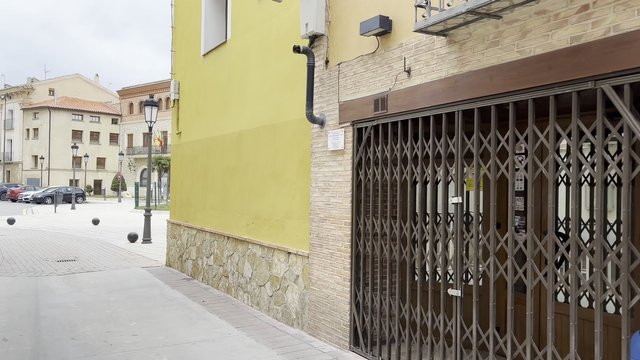
Calamocha has a population of about 4000 people. As a district center, it has schools and other essential services. The economy is largely based on agriculture. Along the road, you can see many places selling jamón. Ham production is a significant industry here. In addition, the town is important for logistics and transportation.

Overall it is a self-sufficient town. We walked toward the church and explored the narrow, winding streets of the old town. Like many other cities, Calamocha has both historic and modern areas.



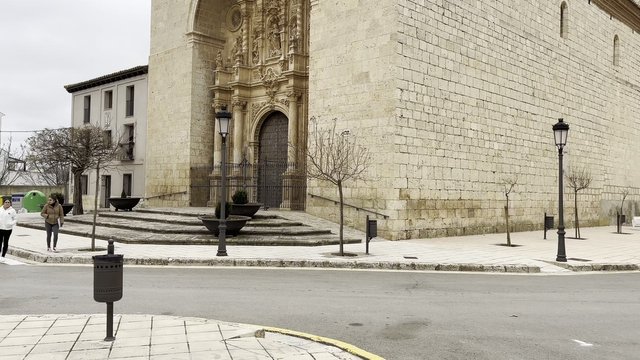
Speaking of prices, the independent houses or attached chalets I saw here are generally around €45,000. So, by Spanish standards, they are quite affordable. Of course, many people prefer homes by the coast with sea or ocean views. However, since this town is inland, there are no such views and you need to travel a bit to reach the coast.
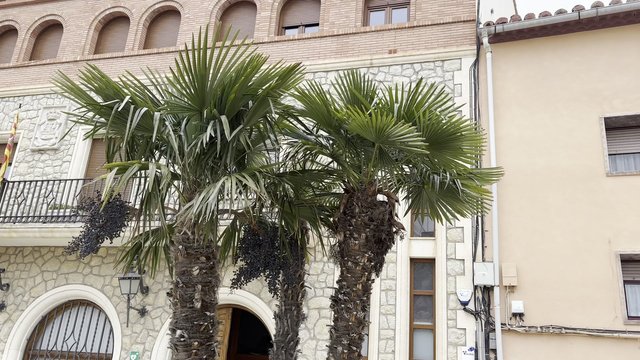



The Jiloca River passes through here. I have taken many trips to the villages along this river. Whenever I get the chance, I would love to share them with you. There are medieval carvings and historical buildings here. You can even see the town hall and a small palm tree.


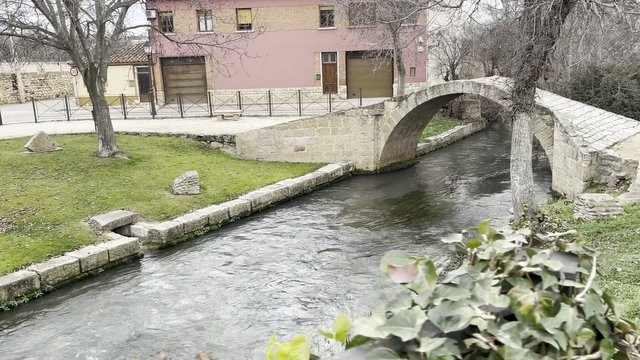
On one side the bell tower is clearly visible. The streets and squares here are quite lively. The place where we ate was completely full and very noisy. During the winter months, people in Spain tend to spend time in bars and indoor spaces. When we visited, it was a gray and overcast winter day. It’s not always sunny, but since this is Spain, the climate is generally mild.

The small fountain here had been shut down for the winter. As I mentioned, sub-zero temperatures are not surprising in the Aragon region. Of course, temperatures can sometimes reach up to 20°C, but cold weather is considered quite normal here.

There is also a newer part of the city, featuring modern townhouses, newly built apartments and sports complexes. In general, everything necessary for daily life is available. Although this is not a provincial capital, it is a relatively large settlement compared to many smaller towns in the area. Even towns with only around 1,000 people tend to have the basic services needed for daily life.

Now I want to tell you about the famous Roman Bridge. This bridge was built over the Jiloca River. Although the river is small, it maintains a steady flow throughout the year. Along its course, there are several towns and villages. The Jiloca River is quite important for Aragon, as it has sustained generations of people living in the region. Here is the bridge and the surrounding green areas.
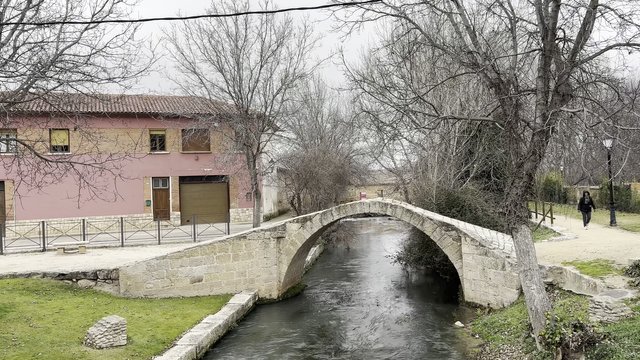
In general this place becomes completely green, warm and beautiful when spring arrives. Since it is currently winter, don’t let the scenery fool you. Late autumn, winter and early spring can look a bit bare, but this is still a lovely place.

We crossed the Roman Bridge and followed the walking path leading to Calamocha’s city park. Look there are many different bird species living here. There are also agricultural fields in the surrounding area. As I mentioned before, this region has a well-developed agricultural industry. The river's flow looks quite strong as well.




Further along there is a point where a canal and the river meet. There is an irrigation system here, allowing the flow of water to be adjusted as needed. Along the way, you can see some inscriptions left by the locals. Then, we entered the park area. Nearby, there is a newly developing neighborhood, with construction cranes and modern townhouses still being built.
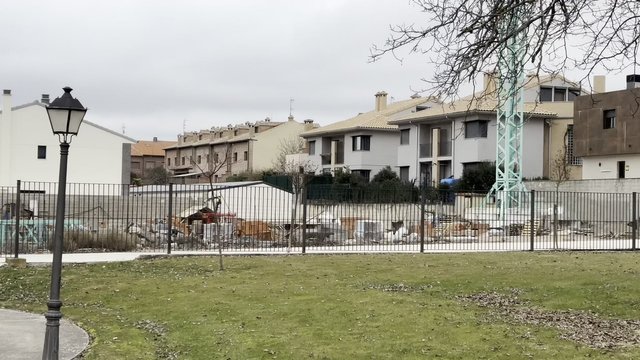

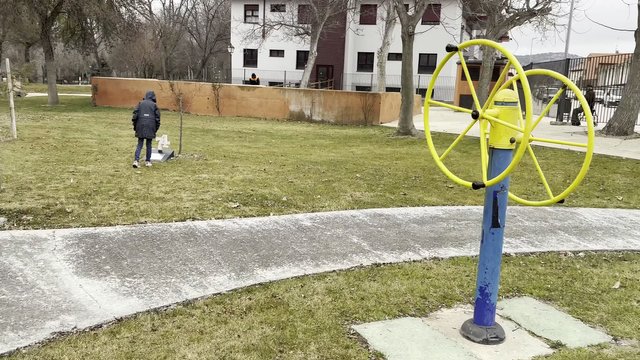

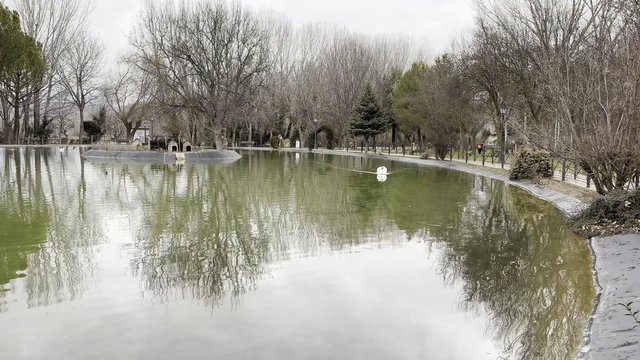
Inside the park there are fitness stations, various exercise areas and maintenance workers keeping the area in good condition. In the pond, elegant swans and ducks were swimming. We fed them leftover breadcrumbs from our large sandwiches and they quickly swam toward us, clearly happy with the treat.


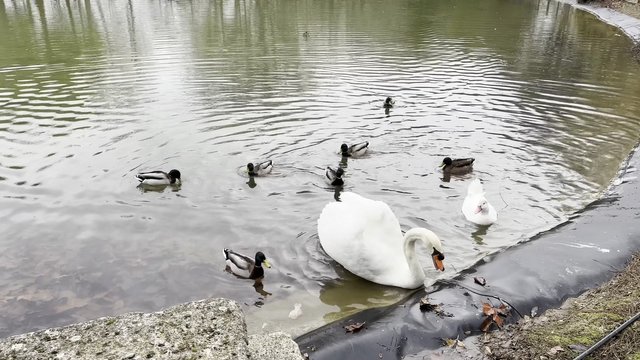
As we continued, we saw some ducks wandering freely. They wagged their tails as if greeting us. The park’s landscaping is also impressive, with beautiful stone arrangements, green archways and well-maintained walking paths. The river continues to flow through one side of the park and further along, there is a scenic waterfall and a relaxation area.



There is also a stone museum here. Different types of stones are on display. Honestly I never realized there was such a wide variety of stones, but it looks like they have been classified in great detail.
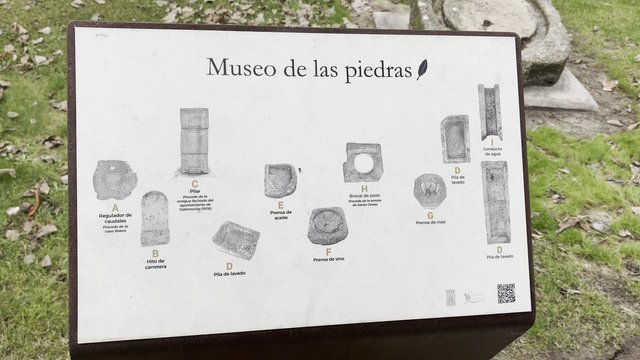

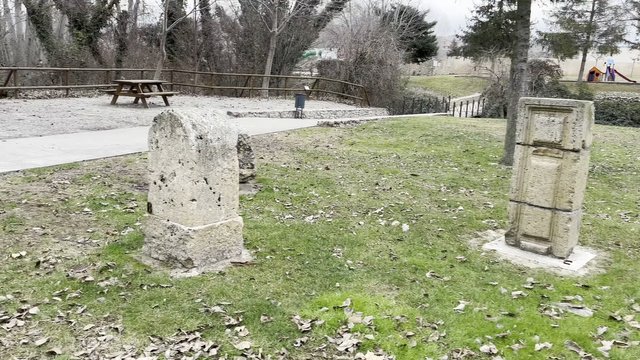
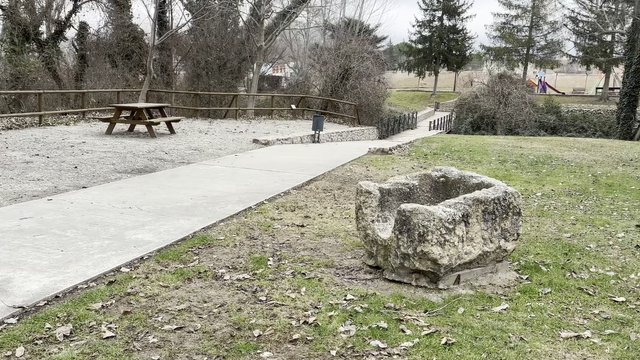


Finally we reached the children's playground. It looks quite new, possibly still under construction. Some work is still ongoing in the area. The playground features a small, ship-themed play structure that seems to be quite popular with kids. Since there are several schools nearby, students likely visit this park often.




Next to the park there is an exhibition hall and a library. Even though this is a small town, there are plenty of amenities. In this charming part of Aragon, you can enjoy delicious jamón and sandwiches while taking a pleasant walk. That wraps up our visit to Calamocha, Teruel, Aragon. I hope you found it interesting. More content is coming soon. Take care and see you next time.





Thank you for using Steem Atlas.
For more information about posting on Steem Atlas check out our Curation Guidelines...
What was the name of the cafe you went to?
Downvoting a post can decrease pending rewards and make it less visible. Common reasons:
Submit
Thank you. The café's name is El Chato.😊 I didn't include the name because I had attached a photo, but it seems like it's too small there as well, so the name is not readable.
Downvoting a post can decrease pending rewards and make it less visible. Common reasons:
Submit
Supporting the Steem Atlas project.
Thank you from the @pennsif.witness team.
Downvoting a post can decrease pending rewards and make it less visible. Common reasons:
Submit
Thank you so much for the support
Downvoting a post can decrease pending rewards and make it less visible. Common reasons:
Submit
Congratulations, your post is upvoted by CCS curation trail from CCS - A community by witness @visionaer3003.
Vote for @visionaer3003 as witness.
Downvoting a post can decrease pending rewards and make it less visible. Common reasons:
Submit
Thank you
Downvoting a post can decrease pending rewards and make it less visible. Common reasons:
Submit
Downvoting a post can decrease pending rewards and make it less visible. Common reasons:
Submit